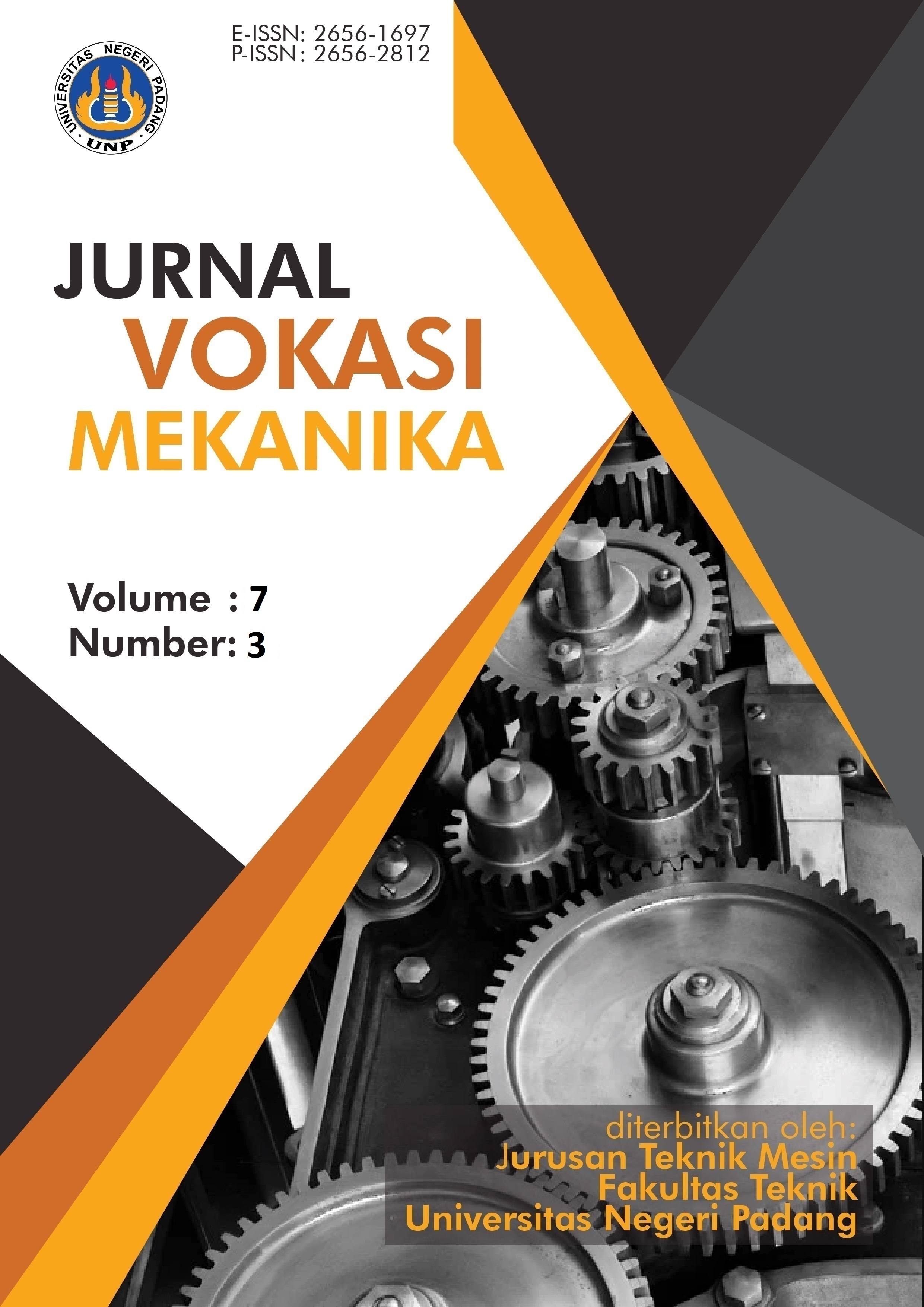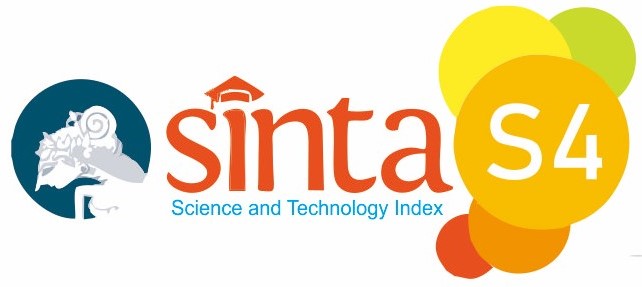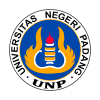Effect of Weld Groove Type Variations on Deformation in Structural Carbon Steel Butt Joint Welding Using the Finite Element Method
Abstract
Deformation in welded joints can reduce the precision, strength, and service life of a structure, especially in structural carbon steel commonly used in the construction industry. One of the main factors influencing deformation is the type and angle of the weld groove. This study aims to analyze the effect of groove type and angle variations on deformation in butt joint welding of structural carbon steel. The method used is a numerical simulation based on the Finite Element Method (FEM) using ANSYS software, consisting of transient thermal and transient structural analyses. The groove variations include V-grooves with angles of 45°, 60°, and 75°, as well as U-grooves with angles of 50°, 60°, and 70°. The simulation results show that the V-groove with a 45° angle produces the maximum deformation of 2.1317 mm, while the U-groove with a 70° angle results in the minimum deformation of 0.23808 mm. These findings indicate that U-grooves generally produce lower deformation compared to V-grooves. Therefore, selecting the appropriate groove design can enhance the quality of weld joints and the overall structural performance.
References
Alfahmi, R., & Saifuddin, M. (2021). Analisa kekuatan sambungan kampuh V pada pengelasan carbon steel dengan stainless steel menggunakan elektroda E 309 terhadap kekuatan impact. Journal of Welding Technology, 3(2), 58–62.
Alhilmy, F. (2023). Simulasi Tegangan Sisa Sambungan Las Antara Baja AISI 1045 dan SS 202. http://eprints.umpo.ac.id/11874/%0Ahttp://eprints.umpo.ac.id/11874/4/2. Halaman Depan.pdf
Amanto, H., & Daryanto. (1999). Ilmu Bahan. Jakarta: Bumi Aksara.
Callister, W. D., & Rethwisch, D. G. (2018). Materials Science and Engineering: An Introduction. In Physical Basis of Plasticity in Solids (10th ed.). John Wiley & Sons, Inc. https://doi.org/10.1142/9789814374064_0002
Chen, J., Schwenk, C., Wu, C. S., & Rethmeier, M. (2012). Predicting the influence of groove angle on heat transfer and fluid flow for new gas metal arc welding processes. International Journal of Heat and Mass Transfer, 55(1–3), 102–111. https://doi.org/10.1016/j.ijheatmasstransfer.2011.08.046
Dak, G., & Pandey, C. (2022). Study on effect of weld groove geometry on mechanical behavior and residual stresses variation in dissimilar welds of P92/SS304L steel for USC boilers. In Archives of Civil and Mechanical Engineering (Vol. 22, Issue 3). Springer London. https://doi.org/10.1007/s43452-022-00468-8
Deng, D., Murakawa, H., & Liang, W. (2008). Numerical and experimental investigations on welding residual stress in multi-pass butt-welded austenitic stainless steel pipe. Computational Materials Science, 42(2), 234–244. https://doi.org/10.1016/j.commatsci.2007.07.009
Erikman, E., Gunawan, Y., & Aksar, P. (2022). Analisis Distorsi Berbasis Metode Elemen Hingga Pada Proses Pengelasan Kampuh U dan V. Enthalpy : Jurnal Ilmiah Mahasiswa Teknik Mesin, 7(3), 129. https://doi.org/10.55679/enthalpy.v7i3.27124
Feli, S., Aalami Aaleagha, M. E., Foroutan, M., & Borzabadi Farahani, E. (2012). Finite element simulation of welding sequences effect on residual stresses in multipass butt-welded stainless steel pipes. Journal of Pressure Vessel Technology, Transactions of the ASME, 134(1), 1–9. https://doi.org/10.1115/1.4004571
Goldak, J., Chakravarti, A., & Bibby, M. (1984). A New Finite Element Model for Welding Heat Sources. Metallurgical Transactions B, 52(1), 299–305. https://doi.org/10.1080/21681805.2017.1363816
Hamid, A. (2016). Analisa Pengaruh Arus Pengelasan Smaw Pada Material Baja Karbon Rendah Terhadap Kekuatan Material Hasil Sambungan. Jurnal Teknologi Elektro, 7(1), 26–36. https://doi.org/10.22441/jte.v7i1.813
Hilmy, Z., Syahroni, N., & Hadiwidodo, Y. S. (2016). Analisa Pengaruh Variasi Komposisi Gas Pelindung Terhadap Hasil Pengelasan Gmaw-Short Circuit dengan Penggunaan Mesin Khusus Regulated Metal Deposition (RMD). IPTEK Journal of Proceedings Series, 0(1). https://doi.org/10.12962/j23546026.y2018i1.3385
Hilmy, Z., Zaki Prawira, M., Dasira, A., Pradana Putra, A., Studi Teknik Perkapalan, P., Sains Dan Tekonologi, F., Karimun, U., Kepulauan Riau, P., & Korespodensi, P. (2022). Sudut Kemiringan V Bevel Pada Proses Pengelasan Stainless Steel Butt Joint Menggunakan Metode Elemen Hingga. Jurnal Maritim, 4(1), 53–63.
Hu, L., Luo, W., Lu, F., & Deng, D. (2024). FE analysis of residual stress and welding deformation of a low-alloy UHS quenched steel fillet joint. Journal of Materials Research and Technology, 29(February), 5693–5712. https://doi.org/10.1016/j.jmrt.2024.02.212
I Mohammed, R. (2015). Finite Element Analysis of Fillet Welded Joint. October, 97.
Iqbal, M., Ibrahim, A., & Azwinur. (2019). Analisa Pengaruh Variasi Kampuh Las Terhadap Ketangguhan Material Baja AISI 1050. Journal of Welding Technology, 1(2), 26–30.
Isworo, H., & Ansyah, P. R. (2018). Buku Ajar Metode Elemen Hingga. 68.
Kou, S. (2003). Welding Metallurgy. In Indian Welding Journal (Vol. 4, Issue 3). https://doi.org/10.22486/iwj.v4i3.150243
Lindgren, L. E. (2006). Finite element modeling and simulation of welding part 1: Increased complexity. Journal of Thermal Stresses, 24(2), 141–192. https://doi.org/10.1080/01495730150500442
Masubuchi, K. (1982). Analysis of welded structures. In Metallography (Vol. 15, Issue 3). Pergamon Press. https://doi.org/10.1016/0026-0800(82)90012-x
Mulyadi, & Iswanto. (2020). BUKU AJAR TEKNOLOGI PENGELASAN (M. M. Dr. Ir. Jamaaluddin (ed.)). UMSIDA Press.
Pangesti, A. A. (2016). Analisa Tegangan Sisa Dan Distorsi Pada Sambungan Tubular Tipe T Dengan Pengaruh Post Weld Heat Treatment Menggunakan Metode Elemen Hingga. Jurusan Teknik Kelautan Fakultas Teknologi Kelautan …. https://core.ac.uk/download/pdf/291472527.pdf
Prasetya, I. E., Kosjoko, K., & Mufarida, N. A. (2022). Pengaruh Variasi Arus Listrik Dan Kampuh Las Terhadap Kekuatan Tarik Dan Struktur Mikro Sambungan Las Tig Pada Aluminum Alloy 6061. Elemen : Jurnal Teknik Mesin, 9(1), 14–23. https://doi.org/10.34128/je.v9i1.187
Sattari-Far, I., & Farahani, M. R. (2009). Effect of the weld groove shape and pass number on residual stresses in butt-welded pipes. International Journal of Pressure Vessels and Piping, 86(11), 723–731. https://doi.org/10.1016/j.ijpvp.2009.07.007
Setyowati, V. A., & Suheni, S. (2016). Variasi Arus Dan Sudut Pengelasan Pada Material Austenitic Stainless Steel 304 Terhadap Kekuatan Tarik Dan Strukturmakro. Jurnal IPTEK, 20(2), 29. https://doi.org/10.31284/j.iptek.2016.v20i2.40
Society, A. W. (2004). American Welding Society. In LIA Today (Vol. 12, Issue 3).
Stamenković, D., & Vasović, I. (2009). Finite Element Analysis of Residual Stress in Butt Welding Two Similar Plates. 1, 57–60.
Wibowo, H. (2020). Analisis Perbandingan Metode Pengelasan untuk Mengendalikan Distorsi dan Tegangan Sisa – Review. Jurnal Dinamika Vokasional Teknik Mesin, 5(2), 95–102. https://doi.org/10.21831/dinamika.v5i2.34782
Wiryosumarto, H. T. (2000). Teknologi Pengelasan Logam. Jakarta: Pradnya Paramita.
Zulfikar, Z. (2018). Numerical Simulation on The Onion Dryer Frame Capacity of 5 kg/hour. Journal of Mechanical Engineering, Manufactures, Materials and Energy, 2(2), 86. https://doi.org/10.31289/jmemme.v2i2.2110
Submitted
Copyright (c) 2025 Jurnal Vokasi Mekanika (VoMek)

This work is licensed under a Creative Commons Attribution 4.0 International License.








.svg_.png)


